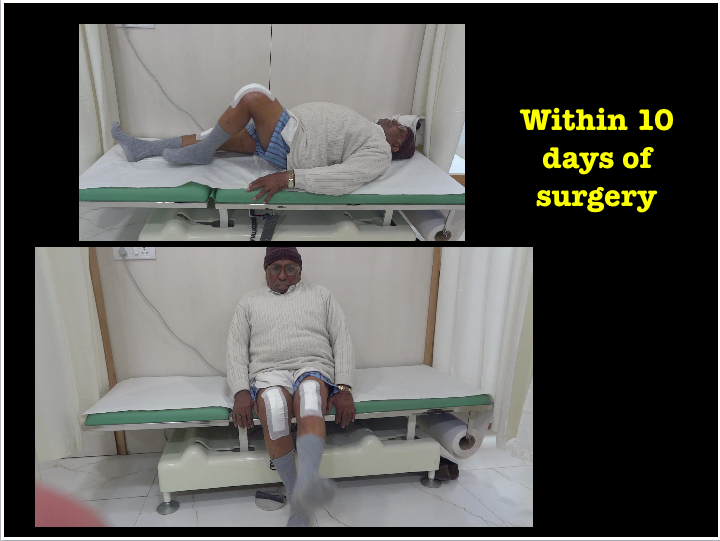Rapid Recovery
Joint replacement surgery decisively is the most successful invention in last three decades. It has given ageing a grace. Millions of elderly have benefitted with this surgery around the world. With increasing longevity octogenarian population is increasing. With lack of exercises, weight gain, structural issues and certain unknown factors arthritis is troubling our younger population as well, to some very badly and to some too early. Delayed or inadequate treatment of Rheumatoid arthritis is also one of the major reason of crippling arthritis in young. Yet many have not been able to accept the surgery for the fear of pain and its questionable results. Unfortunately many such persons have been leading a crippled life full of misery, not knowing that this surgery is in fact a very simple and safe surgery in good hands. In reality this can be compared with the surgery of tooth where after the decay of enamel, a ceramic or metal cap is fixed with cement. Similarly in Joint replacement the damaged cartilage is resurfaced with a metal or ceramic. Following the surgery patient is able to move the joint easily the same day or the next day. One of the pending issue with this surgery has been the post surgery pain. With present day advances Painless rapid recovery after joint replacement is the norm these days. Keeping in synch with the advancement in medical science “pain after joint replacement is the thing of past”. Number of modalities like Minimal Invasive Surgery (MIS) and least trauma to the tissues with use of Computer Navigation, Robotics, Comprehensive Pain Management Plan which includes Continuous Epidural Analgesia, Intra-operative Local infiltration of cocktail of medicines, Nerve Block analgesia combined with a ‘dedicated team of pain management experts’ has made the recovery after joint replacement completely pain free. With newer advanced Implants, patients of Joint Replacement can now have ‘complete pain-free movement around knee, hip and shoulder’ almost mimicking the natural joint. Bleeding during and after the surgery is also negligible these days. In most cases, we do not require ‘blood transfusion’. Our patients are able to stand within two hours of joint replacement surgery and are mobilized on the day of surgery and pursue faster recovery. Hospital stay has reduced to a day or two in most cases. Patients are educated and motivated to do the ‘physical therapy on their own’ with the help of family members. Most of our patients can go home happily pain-free within 2 days of surgery. This in fact is the most reliable surgery of the present decade.






